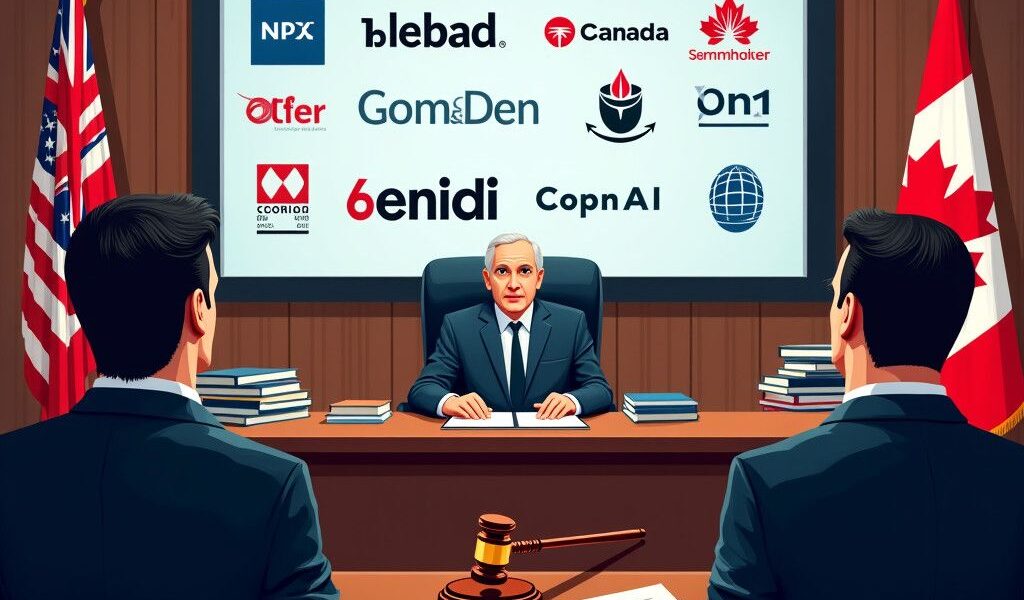Canadian Media Firms Sue OpenAI for Copyright Violations
The emergence of artificial intelligence and its various applications has led to significant changes in industries ranging from content creation to digital marketing. One pressing issue facing the media landscape today is the balance between innovation and intellectual property rights. Recently, a consortium of Canadian media firms initiated legal action against OpenAI, claiming that the AI company has unlawfully exploited their copyrighted materials.
Understanding the Claims
Canadian media companies, including well-known names like The Globe and Mail and Postmedia Network, allege that OpenAI’s training models utilized their proprietary content without permission. The lawsuit claims that OpenAI’s models, such as ChatGPT, have ingested vast amounts of text data from various sources, including news articles, blogs, and other editorial content. The core of their argument is that these activities infringe upon copyright protections that safeguard their work.
The media firms assert that they did not consent to have their articles and other intellectual property used in the training of AI models. This raises critical questions about how AI systems interact with copyrighted content and the legal implications of such interactions. Many legal experts suggest that this case could serve as a landmark example, influencing how future AI technologies are developed and deployed.
Legal Precedents and Implications
This lawsuit touches upon several complex legal issues surrounding copyright law. For instance, the concept of “fair use” (or “fair dealing” in Canadian law) often allows limited use of copyrighted material without needing permission. However, determining what constitutes “fair use” can be quite subjective and varies depending on the context. The critical factor in this case will be whether the media companies can prove that OpenAI’s use of their content does not fall within the boundaries of fair use.
If the courts side with the media firms, it could prompt OpenAI and other AI companies to adopt a more cautious approach to content aggregation and usage. OpenAI may need to provide clear transparency regarding the sources of data used in training its models and consider licensing agreements with content creators to avoid potential infringements.
The Other Side of the Coin
Conversely, OpenAI and similar organizations argue that AI systems function on principles of aggregation and synthesis. They maintain that their models enable creativity and innovation by analyzing existing data to produce new insights and responses. In this view, using publicly available information is part of a broader trend toward enhancing knowledge and fostering new forms of interaction and expression.
Several advocates for AI development also highlight the benefits that these technologies bring to the industry. They argue that AI can help media outlets by providing audiences with better content curation, improving user engagement through personalized experiences, and ultimately driving more traffic to original sources. This argument emphasizes the potential for synergy between traditional media and AI companies.
Possible Outcomes and Looking Forward
As this case unfolds, it has the potential to set significant precedents in both copyright law and the field of artificial intelligence. Observers are closely watching how the legal landscape will evolve in response to this and similar lawsuits. A ruling favoring the media companies could lead to increased scrutiny on AI training methodologies and their reliance on copyrighted content, thereby reshaping the industry.
On the other hand, a ruling in favor of OpenAI could embolden other tech companies to continue utilizing similar practices, possibly accelerating the development of AI technologies without the burden of navigating complex copyright landscapes.
Conclusion
The legal battle between Canadian media firms and OpenAI highlights a critical juncture in the relationship between technology and intellectual property rights. As AI continues to evolve, the outcomes of this case may fundamentally alter how content creators and AI developers interact, potentially leading to new guidelines that protect creative work while fostering innovation.
This case serves as a reminder of the complexities of copyright in the digital age, where the balance between progress and protection is increasingly hard to maintain. It prompts all stakeholders to reconsider how their respective interests can coexist in an evolving digital environment.








